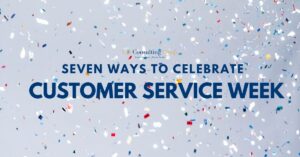In my last blog I talked about what gamification is and how it may benefit your organization. Now I want to discuss how you can keep users motivated to keep coming back.
It’s relatively easy to get users to your application and try it out. But to get them to keep coming back? That’s a different ballgame.
Players keep playing for different reasons. Remember Farmville? It kept users coming back to harvest their crops so they wouldn’t wither, or building sheds to store farm equipment. Everyone had a different reason for playing it.
Here are some of the typical personality types:
- Achievers:
These players prefer to gain points, levels, equipment. They measure their success in the game by how much stuff they have. They will go to great lengths to achieve rewards that give them little benefit other than the prestige of having it.
- Explorers:
This type of player prefers to discover areas, exploring the maps and learning about hidden places. They feel constricted if they have a time limit in a certain area before moving on. They prefer going at their own pace. Finding a hidden treasure is their reward.
- Socializers:
This player is playing mainly to socialize with others, rather than the game itself. Most of their enjoyment stems from interacting with other players. The game is merely a tool to meet others in-game or outside of it.
- Killers:
These players thrive on the competition of the game – especially with other players. They prefer competing – whether as a leader of the game, a combat or skill levels.
Let’s look at simple example that outlines how motivation can be used to keep users engaged.
Premise:
The mayor of a medium-sized city in the Midwest of the United States has believes that gamification techniques can transform city government. He would like to start with the health of city employees. The city has 50,000 employees and they have health statistics listed below.
Solution:
Utilizing gamification to enhance the overall health statistics of an organization is not unique to our city government. The concepts and principles of gamification are all around us. Many people are naturally competitive and like to compare themselves to others.
We will use this natural inclination to compete as the basis for a successful program that will ultimately result in a win-win for both city employees (healthier) and the city government (reduction in health costs).
Here are some key employee statistics to note:
- 34.4% are overweight
- 33.9% are classified as obese
- 53.1% do not meet the minimum for aerobic activity
- 76% do not participate in muscle-strengthening activities
There are several key elements behind gamification: status, milestones, competition, rankings, social connectedness, immersion of reality and personalization. Utilizing these elements will allow employees to become more engaged with their own health, resulting in improved weight, aerobic and muscle strength statistics.
Developing an internal gamification system to address these issues will only be successful if the employees stays engaged and motivated to participate in the program.
The game itself will be based loosely on the widely popular TV show The Amazing Race. Each week, employees will “journey” to a different country to receive a badge upon completion of a designated task(s). Some tasks are immediate, while others span several weeks. The tasks can be completed alone or as inter-departmental challenges. Examples of tasks are listed below.
- Germany: Walking 6 miles during the week. The walk can be split up into 1 mile increments.
- Italy: Consuming 6-8 glasses of water per day for 7 days.
- China: Eat 4 servings of vegetables per day for two weeks.
- India: Complete 40 minutes of cardo 3x a week for 3 weeks straight.
Employees who complete the task will have their name tossed into a pool for either/or virtual or tangible reward.
Employees will be able to challenge co-workers and family members. This enables a lively social environment where players can encourage each other and even celebrate successes with virtual fist pumps. Challenges can either be created or chosen. Examples include:
- Eating something orange
- Walking 8000 steps with a friend
Check-ins to record small achievements are noted.
There is the ability to have inter-departmental challenges, i.e. Finance challenging the courthouse to a virtual race to the finish line.
So how does this program keep employees engaged and participating?
The game offers a variety of intrinsic and extrinsic motivators that will keep employees engaged and participating. They are outlined below.
Extrinsic Motivators:
- The completion of each task to achieve a badge for the country will have many doing the tasks because they want the badges to show others that they were successful in the task.
- The inter-departmental challenges will give the participants of the department the “fame” of beating another team to the finish line.
- The virtual or tangible reward offered for the completion of the weekly tasks will motivate others.
Intrinsic Motivators:
- Many will find the tasks themselves rewarding and will not need the impetus of a game to achieve results.
- Those employees who have secretly wanted to participate in The Amazing Race will participate and compete for the fun factor alone.
- They will find the journey exciting and enjoyable in its own right.
Berni Hollinger helps companies solve problems through Leadership Training, Interim Leadership consulting and Restructuring. As a professional Training Instructor and CFO / Controller, she sees things differently. As a highly experienced CFO, Controller, Accountant, and Financial Consultant, she has led financial departments for Fortune 100 companies increasing bottom line growth and compassionately leading and training employees and restructuring processes to maximize profitability in the publishing, printing, subscriptions / fulfillment, manufacturing and transportation sectors. She is a Professional Quilter, and Quilting Instructor, creating lasting memories through exclusive designs of one-of-a-kind memory quilts.




